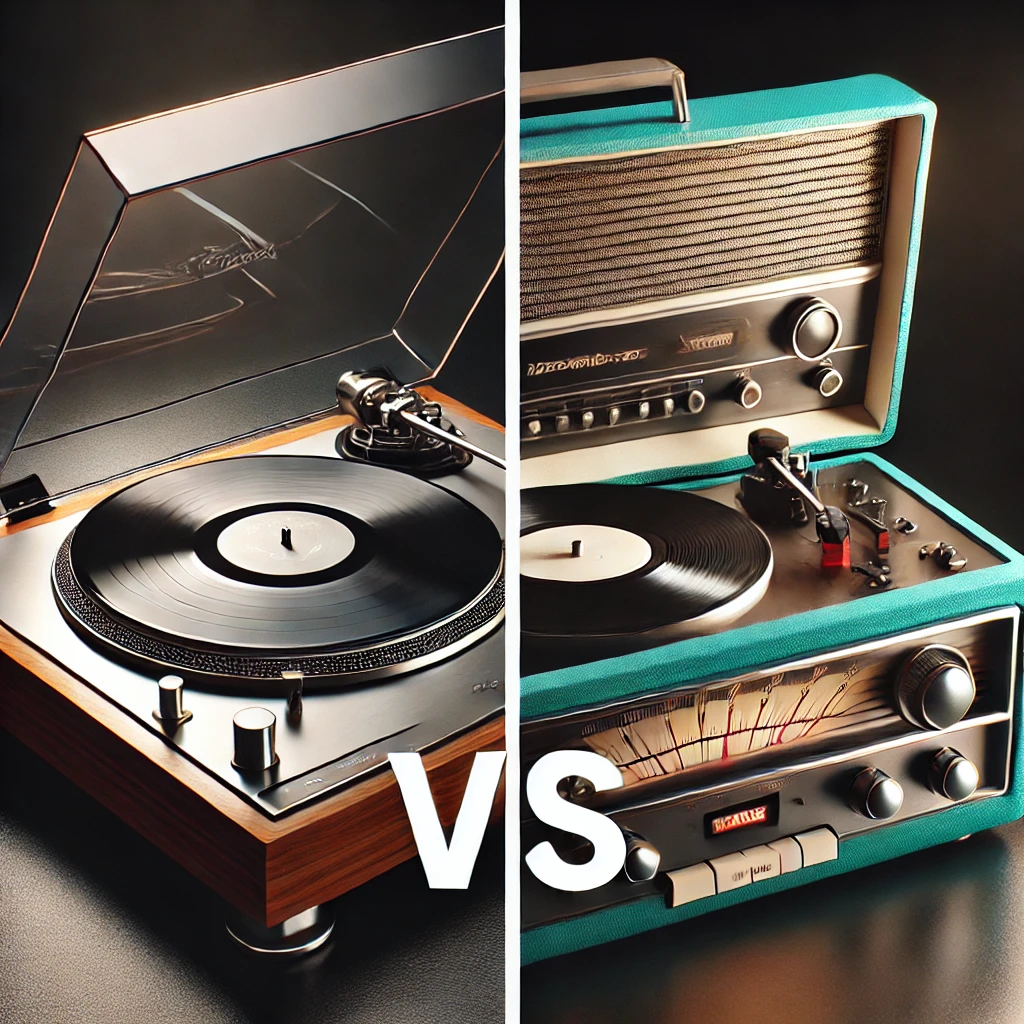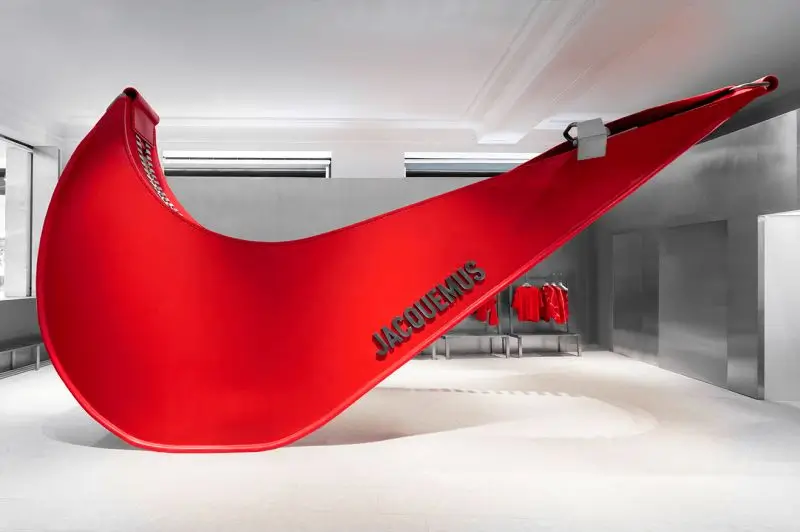The resurgence of vinyl records in recent years has reignited debates about the tools used to play them. While terms like “record players” and “turntables” are often used interchangeably, they represent distinct categories of equipment with specific features, advantages, and limitations. For audiophiles and vinyl newcomers alike, understanding the differences between these devices is essential to getting the most out of a vinyl collection.
This article unpacks the distinctions between record players and turntables, gathers expert insights on their performance, and highlights some of our editors’ favorite vinyl records for a well-rounded listening experience. Let’s put the needle on the record and spin into the details.
Record Players vs. Turntables: The Basics
What Is a Record Player?
A record player is an all-in-one device that includes a turntable, built-in speakers, and often a built-in amplifier. It’s designed for plug-and-play convenience, making it an excellent choice for beginners or casual listeners. Record players often emphasize simplicity over high-fidelity audio quality, with many models featuring retro-inspired designs.
Key Features of Record Players:
•All-in-One Design: Combines a turntable, amplifier, and speakers into a single unit.
•Ease of Use: Minimal setup; just plug it in and play.
•Affordability: Often more budget-friendly than separate components.
Limitations:
•Limited sound quality compared to high-end turntables.
•Fewer options for customization and upgrades.
What Is a Turntable?
A turntable, by contrast, is a standalone device that focuses on playing records with precision and high fidelity. Turntables require external components like speakers and amplifiers, giving users greater control over their audio setup. These devices are favored by audiophiles and DJs for their superior sound reproduction and customizability.
Key Features of Turntables:
•High-Quality Components: Often feature advanced tonearms, cartridges, and platters for better sound quality.
•Customization: Allows users to pair with high-end amplifiers and speakers for optimal performance.
•Versatility: Models range from manual to fully automatic, catering to different preferences.
Limitations:
•Requires additional equipment, which can be costly.
•More complex setup, less beginner-friendly.
Expert Insights: Choosing Between Record Players and Turntables
We consulted audio experts and industry professionals to better understand the advantages and disadvantages of each option.
When to Choose a Record Player
“For someone just getting into vinyl or looking for an aesthetically pleasing setup that doesn’t require much effort, a record player is a solid choice,” says Emily Tran, an audio engineer specializing in analog sound. “Modern record players often come with Bluetooth capabilities and USB outputs, making them versatile for casual use.”
Emily also points out that many record players are designed with portability in mind. Compact, lightweight models make it easy to enjoy vinyl on the go, whether in a living room or at a backyard gathering.
When to Choose a Turntable
Turntables are better suited to listeners who prioritize audio quality. According to Steven Wells, a DJ and vinyl collector, “Turntables are built for precision. From the stylus to the tonearm, every component is designed to preserve the detail and dynamic range of the recording. If you’re serious about sound, you can’t beat a well-calibrated turntable.”
Wells also emphasizes the role of upgrades. “Swapping out the cartridge or upgrading to a better preamp can make a world of difference. That level of control simply isn’t available with most record players.”
Key Differences: A Technical Comparison
Feature Record Player Turntable
Design All-in-one setup Standalone, requires external components
Ease of Use Beginner-friendly, minimal setup Requires additional setup and knowledge
Sound Quality Basic to moderate High fidelity, customizable
Portability Lightweight and compact Heavier, less portable
Editors’ Favorite Vinyl Records
No discussion of record players and turntables would be complete without exploring the music itself. Here are some of our editors’ go-to vinyl records, chosen for their exceptional sound quality and timeless appeal.
Pink Floyd – The Dark Side of the Moon
Editor’s Note: “A masterpiece of engineering, this album truly shines on a high-end turntable. The dynamics and details are breathtaking.”
Fleetwood Mac – Rumours
Editor’s Note: “Whether you’re spinning this on a beginner record player or a professional turntable, the emotional resonance of this album is undeniable.”
Miles Davis – Kind of Blue
Editor’s Note: “This classic jazz record is a test of any audio setup. On a well-calibrated turntable, the horn sections feel like they’re in the room with you.”
Billie Eilish – When We All Fall Asleep, Where Do We Go?
Editor’s Note: “Modern production techniques meet vinyl warmth. A perfect way to show off the versatility of turntables.”
David Bowie – The Rise and Fall of Ziggy Stardust and the Spiders from Mars
Editor’s Note: “A must-have for any vinyl collection. The glam-rock textures come alive on analog formats.”
Customization and Upgrade Paths
Turntables offer endless opportunities for customization. Here are some common upgrades to enhance your vinyl experience:
Cartridges and Styluses
The cartridge and stylus play a pivotal role in sound reproduction. Upgrading to a moving-coil cartridge or a high-quality stylus can significantly improve audio clarity.
Pre-Amps
A dedicated preamp amplifies the turntable’s signal with greater precision than the built-in options found in record players. Popular models include the Pro-Ject Phono Box and Cambridge Audio Alva Duo.
Speakers
Pairing your turntable with high-quality speakers, such as KEF LS50 Wireless II or Klipsch RP-600M, can elevate your listening experience.
Isolation Platforms
Turntables are sensitive to vibrations. Adding isolation platforms or feet can reduce interference, ensuring accurate playback.
Vinyl Care and Maintenance
Regardless of whether you choose a record player or a turntable, proper vinyl maintenance is crucial. Here are some tips to keep your records in top condition:
•Use Anti-Static Sleeves: Prevent dust and static buildup.
•Clean Records Regularly: Use a vinyl brush or cleaning solution.
•Store Vertically: Avoid warping by keeping records upright in a cool, dry place.
•Replace the Stylus: A worn stylus can damage your records.
The Verdict: Which Should You Choose?
The choice between a record player and a turntable depends largely on your priorities.
Choose a Record Player If:
•You’re new to vinyl and want a hassle-free experience.
•You prioritize portability and convenience.
•You prefer an affordable, all-in-one solution.
Choose a Turntable If:
•You value sound quality and are willing to invest in a complete audio system.
•You enjoy customizing and upgrading your setup.
•You’re a serious audiophile or DJ.
The Future of Vinyl
As vinyl’s popularity continues to grow, both record players and turntables will play vital roles in the listening landscape. Advances in technology, such as wireless connectivity and high-resolution analog-to-digital converters, are blurring the lines between the two categories. However, the tactile and nostalgic appeal of vinyl ensures that its charm will remain timeless.
Whether you’re spinning vintage classics on a portable record player or meticulously calibrating your turntable for high-fidelity playback, the joy of vinyl lies in its ability to connect us to the music in a physical, intentional way.
So, put the needle on the record—your journey into the world of vinyl awaits.
No comments yet.








